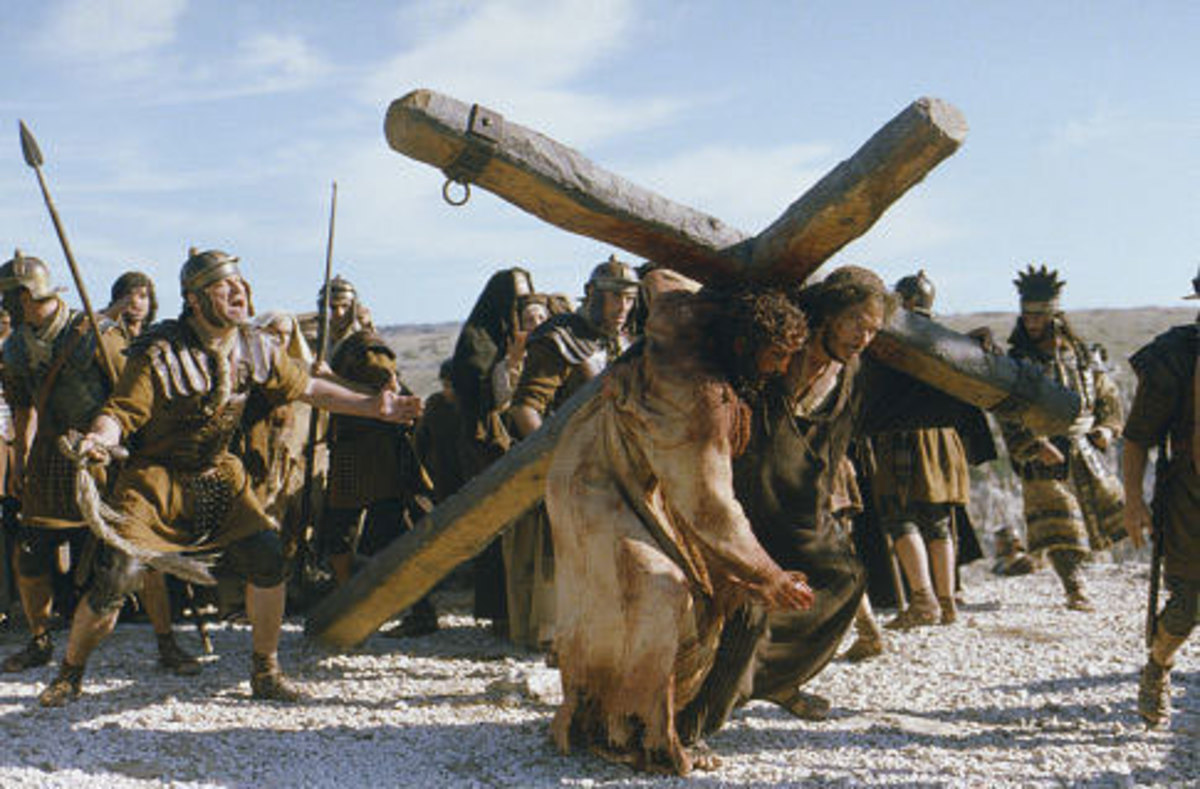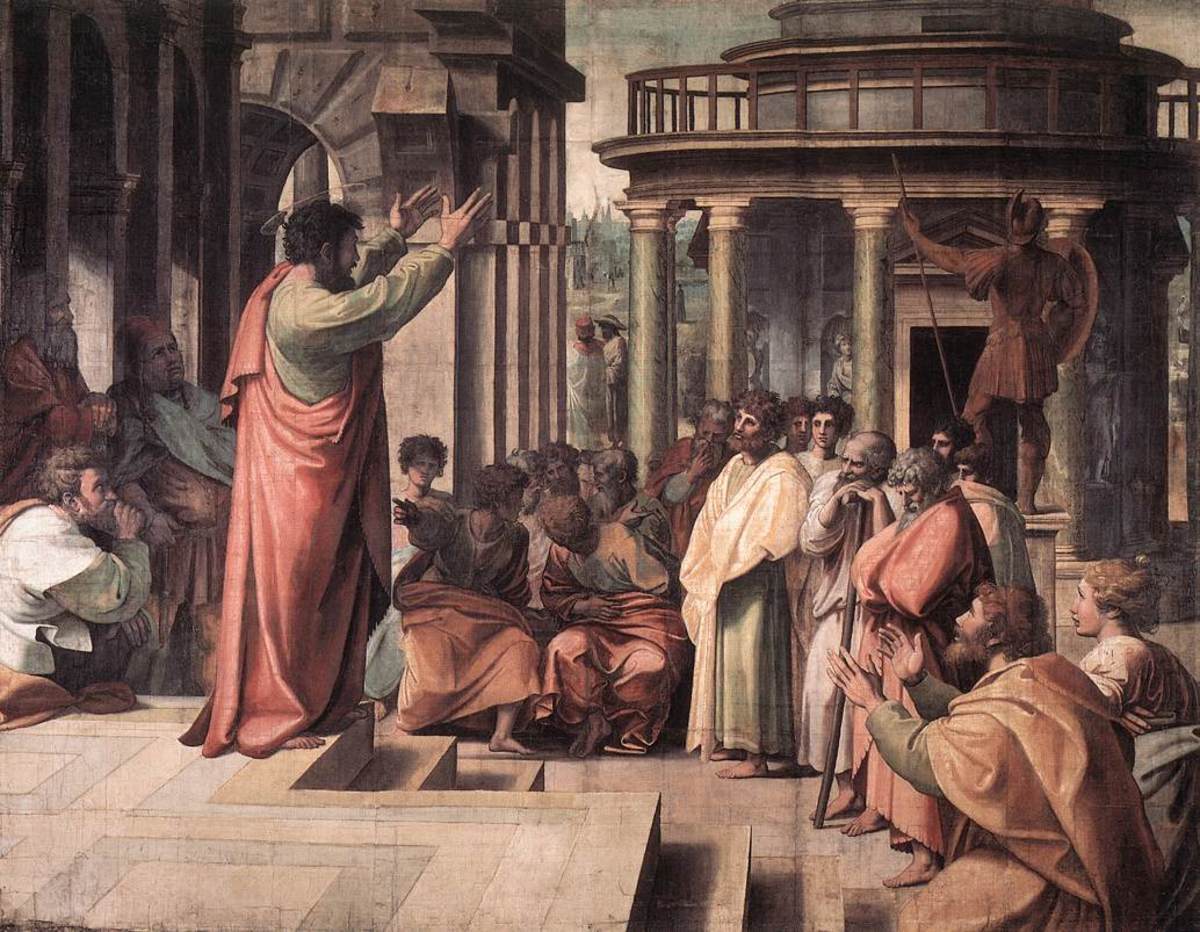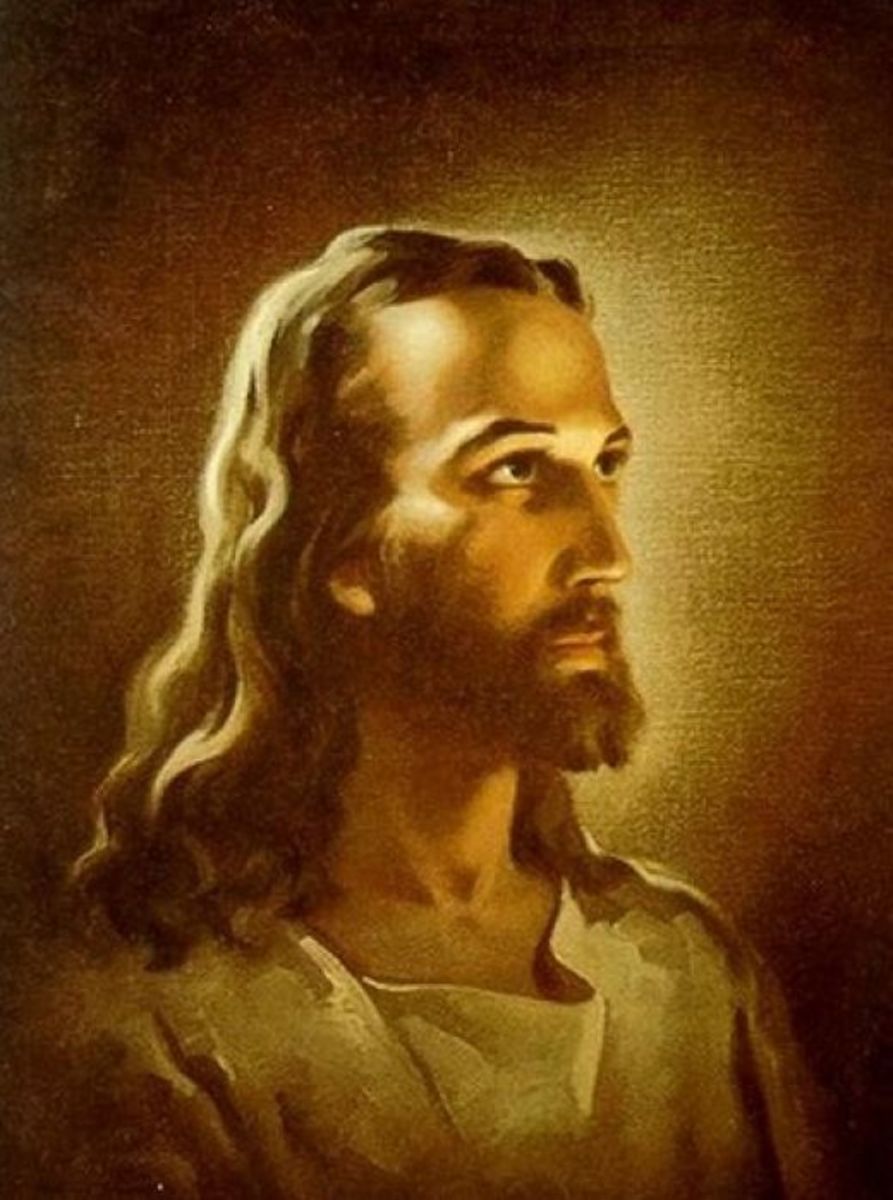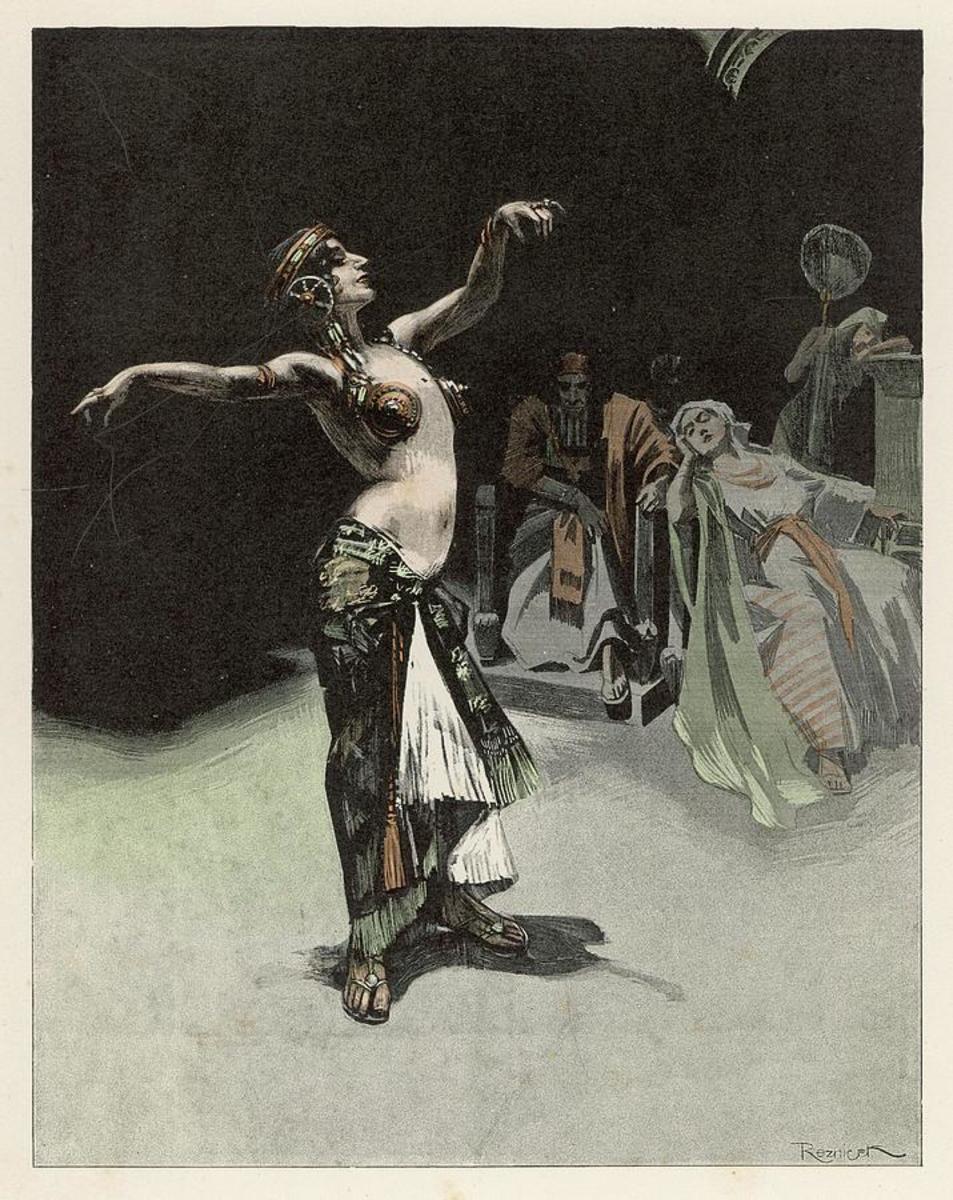Sainthood?

“Santo Subito”
How long is the journey from sinner to sainthood? What distance must one travel to reach a position of holiness before God? Such has been the dilemma since man’s inception. Throughout the course of history men have attempted this daunting journey and have done so through various means and with various results. Though the language of Sainthood may be unfamiliar and the religious jargon vehemently scorned, the fact of the matter is that every person is taking the journey; a journey which will conclude in an appointment before the One who spoke the world into existence. This search for Sainthood, no matter the name one may call it, is a direct result of the eternal awareness placed in each person’s heart. (Ecc 3:11) Deep down, behind the man-made veneers and underneath the filthy rags, resides the awareness that there must be more. This is precisely what is spoken of in Romans 1:18-25:
“For the wrath of God is revealed from heaven against all ungodliness and unrighteousness of men who suppress the truth in unrighteousness, because that which is known about God is evident within them; for God made it evident to them. For since the creation of the world His invisible attributes, His eternal power and divine nature, have been clearly seen, being understood through what has been made, so that they are without excuse. For even though they knew God, they did not honor Him as God or give thanks, but they became futile in their speculations, and their foolish heart was darkened. Professing to be wise, they became fools, and exchanged the glory of the incorruptible God for an image in the form of corruptible man and of birds and four-footed animals and crawling creatures. Therefore God gave them over in the lusts of their hearts to impurity, so that their bodies would be dishonored among them. For they exchanged the truth of God for a lie, and worshiped and served the creature rather than the Creator, who is blessed forever. Amen. ” (Romans 1:18–25, NASB95)
Both the glory of creation and the gift of conscience cry out that God exists and that He matters1 It is this conscious awareness that drives each of us to either be okay in our own eyes and without need of God or okay in Gods eyes; in either case we are all seeking a type of sainthood.
Unfortunately for many is the fact that they have embarked on the journey by way of their own broken compass and have found themselves marooned on an island of despair; miles away from the beacon of truth. In an attempt to be “good enough” people from all walks of life and periods of time have sewn garments of self-procured righteousness only to discover that self procured righteousness reveals more about mans depravity than his decency. Following in the footsteps of our ancient parents, ours is a society of scantily clad sinners hiding behind a mess of wilted fig leaves. Some spend a life time in search of a righteousness that doesn’t fade, fail or wilt only to be depressingly hopeless in the moments before their last breath.
However, what if the journey from sinner to saint could be instantaneous? What if the journey to sainthood is accomplished neither by a lifetime of accumulated good works nor an expedition to enlightenment, but rather a moment of complete surrender and abandoning trust? What if the deep reservoirs of regret and irrepressible stains of sin could be dealt with in one single moment in time? No doubt, such seemingly implausible thoughts offend those who through their good works are building houses of paper on a foundation of sand. After all, is Sainthood not the result of many years of diligent labor, impeccable morality and tenacious discipline? The Roman Catholic Church among many others would have us believe that Sainthood is beyond reach for the living and is only available to a select few. The following is a general description of all that is involved in the process of Sainthood according to the Roman Catholic Church.
- Usually between 5 and 50 years after a would-be saint's death, a formal request is made to consider a person as saint. The group making the request, called the Actor Causae, consists of people from the candidate's church and community, and the request is directed to the bishop of the diocese where the person died. The request includes testimony of the person's exceptional virtue and dedication to God.
- The bishop decides whether the evidence is compelling enough to take it to Rome. If so, he asks the Congregation for the Causes of Saints for permission to open the cause.
- If permission is granted, the bishop opens a tribunal and calls witnesses to attest to the quality of the person's public life. The person must be shown to have been virtuous, devout, religious, and characterized by love, kindness, prudence and other virtues (concrete examples are required). Miracles are not necessary at this point, but they are recorded if mentioned. If the person passes this step, he or she is called a Servant of God.
- The bishop sends a report to Rome, where it is translated into Italian. This step is called the Apostolic Process.
- A summary called the Positio is presented to the Congregation for the Causes of Saints.
- Nine theologians scrutinize the evidence and documentation. If majority pass it, goes to Congregation.
- If they approve, the Prefect of the Congregation authorizes person to be called Venerable.
- If any miracles are reported (which qualify the person for beatification or canonization), the Prefect presents the cause to the pope to decide. Canonization is considered a function of papal infallibility, as it is important that believers venerate and pray to only those who are actually in heaven.
- The pope declares beatification or canonization at a special Mass in the saint's honor.2
Clearly, Sainthood is unreachable for the majority of people if this is the manner in which it is accomplished. Nevertheless, according to Scripture, Sainthood has very little to do with our own saintliness as perceived and validated by man. On the contrary, the testimony of Scripture is that Sainthood is not only attainable for each and every person but based upon the saintliness of someone other than us.
This is magnified in un-ignorable clarity when one reads and understands the first couple of verses from the first chapter of 1 Corinthians. After having poured his life out to this troubled body of believers, the apostle Paul moved on to engage in additional ministry opportunities. Not long after his departure he wrote a letter to the young church in hopes to offer instruction and direction. Unfortunately, the letter was neither well received nor preserved. Nevertheless, the follow up letter which addresses the questions and issues that continued to develop in the troublesome church in Corinth we do have and refer to it as none other than 1 Corinthians.
Amazingly, when he sought to correct their blurred vision and redirect their erroneous behavior, the Apostle Paul began his letter to the Church in Corinth in such a way as to remind them of their perfect standing as Saints. Notice the language of the apostle Paul, “Paul, called as an apostle of Jesus Christ by the will of God, and Sosthenes our brother, To the church of God which is at Corinth, to those who have been sanctified in Christ Jesus, saints by calling, with all who in every place call on the name of our Lord Jesus Christ, their Lord and ours: Grace to you and peace from God our Father and the Lord Jesus Christ”.
This is nothing short of astonishing when considering the fact that the church in Corinth was displaying lifestyles which were far from saintly. In fact, in the first four chapters we learn that they were being torn apart by divisive attitudes and behaviors. In chapters five and six we discover how immorality and degradation was that which characterized them. Then, as if this were not enough to form an unattractive opinion of this struggling church, we discover in the remainder of the book how their doctrine had become polluted with the impurities of self-importance and pride. For sure, there was a historical church in Corinth but equally sure is the fact that “Corinth was in the Church”.
Nevertheless, it is on this imperfect canvas which we refer to as “The Church in Corinth” that God has given us a great and unfathomable truth to consider. Simply said, in spite of our personal struggles, in Christ, we have been enriched by God, enabling us to live a life of practice which rightly resembles our position. Camouflaged in the garb of the mundane components of a letter Paul shines a rather sobering light on the centrality of Christ, reminding us that our position in Christ is the key to our practice in life. Notice the manner in which Paul addresses this troubled church, “Paul, called as an apostle of Jesus Christ by the will of God, and Sosthenes our brother, To the church of God which is at Corinth, to those who have been sanctified in Christ Jesus, saints by calling, with all who in every place call on the name of our Lord Jesus Christ, their Lord and ours”. Paul reminds the Corinthian church and all believers by extension that the true church is represented by those who have been sanctified. The word here is a perfect passive participle indicating a past act accompanied by continuing consequences. The act of believing or placing faith in Christ places one into a position of being “In Christ” of being set apart which has continuing consequences. Primarily, scripture represents sanctification as this “once-for-all definitive act” accomplished by Christ on the cross which we are now the beneficiaries of.3 We see this in such passages as 1 Corinthians 6:11 where we read, “Such were some of you; but you were washed, but you were sanctified, but you were justified in the name of the Lord Jesus Christ and in the Spirit of our God.” (1 Corinthians 6:11, NASB95)
However, scripture also presents in great clarity the “experiential or progressive” aspect of sanctification which explains why one can be sanctified and still struggle with sin. We see this in passages such as Philippians 2:12–13 which states, “So then, my beloved, just as you have always obeyed, not as in my presence only, but now much more in my absence, work out your salvation with fear and trembling; for it is God who is at work in you, both to will and to work for His good pleasure.” Our positional sanctification enables our experiential sanctification. The positional reality of our union with Christ is the fountain from which our experiential behavior flows. When we fail to appropriate this truth…when we fail to rightly embrace our position in Christ…the inevitable result is ruin! This is why Paul will address those in the Corinthian congregation involved in immorality with prostitutes in chapter 6 in a rather unexpected fashion; he reminded them that they were in Christ. In doing so he pointed out the fact that when they engaged in the illicit behavior, they were committing the sin of uniting Christ with immorality. Purity, selfless love, doctrinal fidelity, and unity are just some of the experiential manifestation of our positional reality in Christ.
The Corinthian church was certainly not acting saintly; however, neither do you and I during seasons of life. It is a sober and humbling reality that no matter how hard we may try, or how many $9.99 special one year devotions we purchase, we will never live a sinless life as some have erroneously taught. This very struggle is where we find the apostle Paul in chapter 7 of the book of Romans and that which 1 John speaks of.
Nevertheless, praise God, we are transported to a new position of alien righteousness from the time we place our faith in Christ and such a transformation is immediate and irrevocable! Then, by His grace alone, through the work of sanctification, He brings our experience into conformity with our position and it is this that we should pursue and celebrate. It is on this ground alone that Paul can address the believers in Corinth as he does; namely, by referring to them as Saints. According to man’s tradition Sainthood is that which one earns through the laborious works of life, but according to Scripture, Sainthood can never be earned. The reason for this is that only one has lived a life of perfect submission, obedience and holiness and if we are to be declared “Saints” we will have to somehow receive credit for His saintliness. This is the glorious news of the Gospel. In Christ alone and never on the basis of one’s native righteousness, a righteousness which is nothing more than a delusional mirage, do we receive the status of “Sainthood”. This is the language of 2 Corinthians 5:21 which reminds us that “He made Him who knew no sin to be sin on our behalf, so that we might become the righteousness of God in Him”. This we could easily refer to the “Great Exchange” our sin for His righteousness, our filthy rags for His righteous robe, our nakedness for His garments, our emptiness for His fullness, our failures for His victory, our sinfulness for His saintliness!
Therefore, those who wish to know how long is the journey from sinner to sainthood need only to consider the distance traveled from Heaven to this broken earth. This is the journey taken by God the son for the purpose of providing that which we could never procure on our own. For Him, it was a journey of inestimable condescension and it was brought to fruition over a period of 33 years. Yet, for those who look to Christ and believe it is a journey lasting no more than a single moment in time. In fact, the journey from sinner to Saint is immediate according to the Scriptures.
To place this into stark contrast, consider the following excerpt from an article published on the website of CBS news. Speaking of the 1.5 million pilgrims that flooded Rome to see John Paul II move a step closer to sainthood the article describes the monumental nature of the event.
"John Paul's beatification, the fastest in modern times, has triggered a new wave of anger from sex-abuse victims because much of the criminality occurred during his 27-year watch. Critics also say John Paul left behind empty churches in Europe, too few priests in North and South America, priests who violate their celibacy requirement in places like Africa and a general dwindling of the faith in former Christian strongholds.
John Paul's defenders argue that an entire generation of new priests owe their vocations to John Paul, and that millions of lay Catholics found their faith during the World Youth Days, which were a hallmark of his papacy.
Vatican officials have insisted that the saint-making process isn't a judgment of how John Paul administered the church but rather whether he lived a life of Christian virtue.
Benedict put John Paul on the fast-track for possible sainthood when he dispensed with the traditional five-year waiting period and allowed the beatification process to begin weeks after his April 2, 2005, death. Benedict was responding to chants of "Santo Subito!" or "Sainthood Immediately" which erupted during John Paul's funeral."4
Unfortunately, the concept of “Sainthood Immediately” was greatly misunderstood not only by those in the crowd that day but many who struggle to be “good enough” in this life. Though the Roman Catholic Church is under the impression that this is the fastest record of one achieving sainthood, the fact of the matter is that Scripture offers an even faster process for all who cry out to Christ. Santo Subito is what Christ offers the world…it is what Christ offers you.
1. This phrase was originally used by Francis Schaeffer
2. http://www.religionfacts.com/christianity/practices/honoring_saints/canonization.htm This online reference utilized the following sources:
Chapter 15: Calling on the Canonized," in John Trigilio, Jr., and Kenneth Brighenti, Catholicism for Dummies (Wiley, 2003), pp. 273-292.
Camillus Beccari, "Beatification and Canonization." The Catholic Encyclopedia, Vol. II (1907).
"Canonization." F.L. Cross, ed., The Oxford Dictionary of the Christian Church (Oxford UP, 1997).
3. A Theology for the Church, Edited by Danny Akin, “The Doctrine of Salvation” page 758
4. This article can be found at http://www.cbsnews.com/2100-202_162-20058744.html









